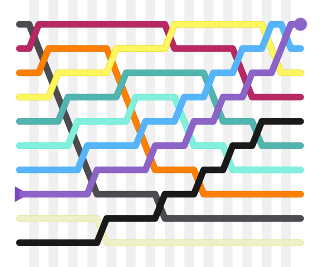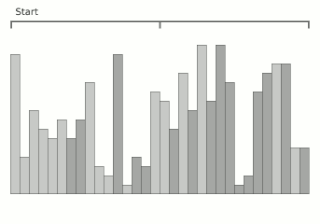| OEIS | General term (k ≥ 1) | Concrete gaps | Worst-case
time complexity | Author and year of publication |
|---|
|  |  |  [e.g. when N = 2p] [e.g. when N = 2p] | Shell, 1959 [4] |
|  |  |  | Frank & Lazarus, 1960 [8] |
| A000225 |  |  |  | Hibbard, 1963 [9] |
| A083318 |  , prefixed with 1 , prefixed with 1 |  |  | Papernov & Stasevich, 1965 [10] |
| A003586 | Successive numbers of the form  (3-smooth numbers) (3-smooth numbers) |  |  | Pratt, 1971 [1] |
| A003462 |  , not greater than , not greater than  |  |  | Knuth, 1973, [3] based on Pratt, 1971 [1] |
| A036569 |  |  |  | Incerpi & Sedgewick, 1985, [11] Knuth [3] |
| A036562 |  , prefixed with 1 , prefixed with 1 |  |  | Sedgewick, 1982 [6] |
| A033622 |  |  |  | Sedgewick, 1986 [12] |
|  |  | Unknown | Gonnet & Baeza-Yates, 1991 [13] |
| A108870 |  (or equivalently, (or equivalently,  ) ) |  | Unknown | Tokuda, 1992 [14] (misquote per OEIS) |
| A102549 | Unknown (experimentally derived) |  | Unknown | Ciura, 2001 [15] |
| A366726 |  |  | Unknown | Lee, 2021 [16] |
|  |  | Unknown | Skean, Ehrenborg, Jaromczyk, 2023 [17] |






































































